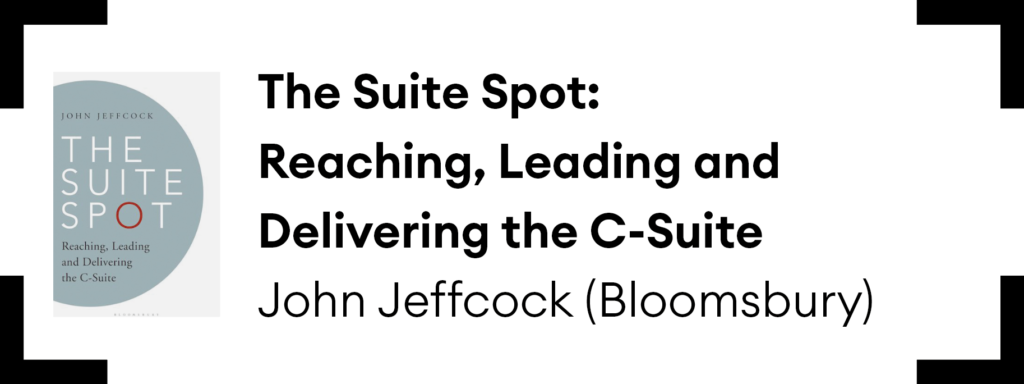If you’re aiming for the C-suite, you need to plan ahead – and develop a broad range of skills and capabilities
Do you find the idea of a book about executive directorships dull or remote from your career just now? Well, if you have the slightest interest in rising to the top – and perhaps if you’re already there – you should think again. The Suite Spot by John Jeffcock might be just the book to change your mind.
Jeffcock is chief executive of Winmark, a C-suite networking business. This has afforded him access to hard data about board careers, and to a wide network of C-suite executives. That lends credibility to his conclusions, which apply to businesses in the US, Europe and India.
The Suite Spot is a practical, thoughtful and humane book about how to get to the C-suite, how to survive and thrive once you do, and what you can do when it is time to leave. To reach the C-suite, as Jeffcock shows, you need to make the right career decisions decades before (and have a degree of luck). How many people in their 20s understand this?
The facts are stark: if you haven’t made it to the C-suite by your mid-fifties, you probably won’t. If you do make it, your C-suite career will last about five years, unless you take on a new area of responsibility or win promotion to chief executive. After that, you need to be thinking about something else to do. Given that we are set to keep working later in life as we live longer, a career plan for when you have left the C-suite will become a necessity.
To get to the C-Suite you have to be unusually intelligent and energetic. You have a better chance if you have a background in technology, but whatever your professional orientation, you will need to have broadened your capabilities over a wide range of business activity, to a standard well above average. Many middle managers seeking promotion to the C-suite underestimate the size of the gap they need to span: it is the equivalent of learning four new business areas from scratch, says Jeffcock. This reflects the nature of the job – having responsibility for a specific area of the business, as well as needing to add tangible value across the entire organization. It will always be important to have run a line function, with responsibility for a product or a geographical area. Without this experience you will lack credibility with your peers, and in most cases it will rule you out for promotion to chief executive.
To stay in the C-suite you must be prepared for a highly pressurized existence. It is not for everybody. Moreover, the requirements for top executives are undergoing rapid change, so you will need to be adaptable and constantly learning. Disruptive technologies, social media and increasing consumer expectations about ethical standards in business are reshaping the role of the C-suite. When crises hit, as they will, C-suite leaders need to be quick-thinking, with steady nerves and a poet’s precision with words.
Jeffcock also highlights the trend for smaller management teams. It means that the same range of skills, knowledge and responsibility need to be concentrated among fewer people. For example, a combined chief legal and HR officer has responsibility for both the performance and capabilities of the organization, sitting within an ethical framework that directs its legal, risk and property protection work.
The Suite Spot occasionally feels rather breathless – but then, like potential C-suite leaders, it has a lot of ground to cover. It is an insightful read for any leaders aiming to reach the top of business – and a reminder of the need for some careful career and development planning to build the breadth of skills and experience that are needed at the top.


